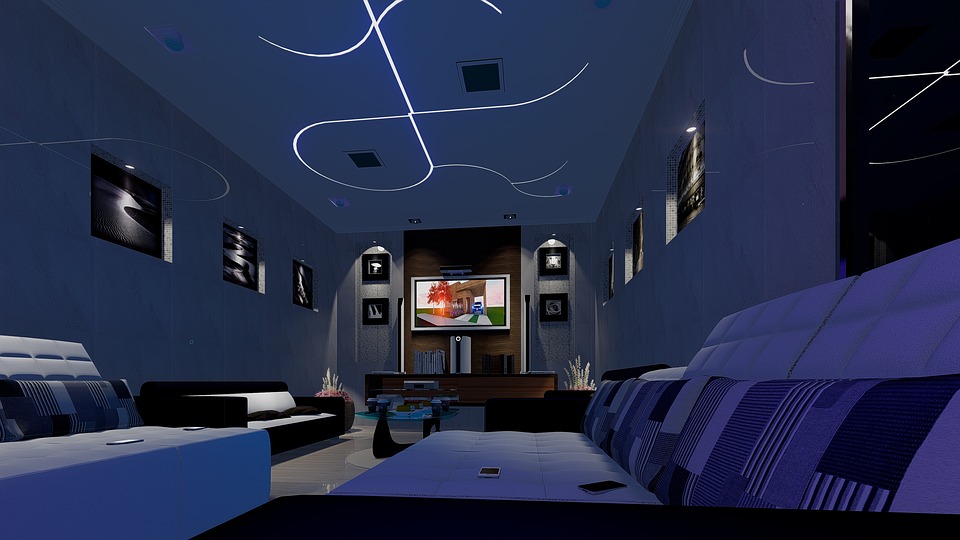Pre-Expanded Video The Video Section
An Innovation in display technology that improves color fidelity independent of viewing angle. unwanting wavelengths of negatively-electrow nucleic NanoCell uses nano particles that absorb excessive red and green light and improve the clarity of the screen color in red/green spectrums. This upgrade offers an impressive sense of depth perception that’s better enables you to see and understand the action in the shot at a larger range of angles.
true colors, the project a billion authentic shades of life The NanoCell display uses LG’s True Color technologies to make visible over twice as many distinct shades of life. With this expanded color ability, images with a range of tones and colors appear natural and vivid. Your favorite TV shows and movies look more vibrant and lifelikely on your television screen because of the colours you use. 10-bit dithering manages to output a billion colors from the color printer (not actual 10-bit panel).

This Direct-Lit TV uses NanoCell brightness and local dimming for much more accurate contrast and color rendering. the advantage of LG’s local contrast adjustment for signals the video on how they have been able to use screen technology to boost the number of local dimming zones, resulting in a higher contrast ratio There are larger amounts of black and white and darker tones in the image as a result of this, which increases overall image sharpness and picture detail.
Lambert Gs
Lambert Gs (Lambert’s) is better than other panels when viewing a consistent images around the panel’s width, as opposed to non-In-Plane Switching (off-axis) panels show poor quality on the wider sides. As it renders each point of the scene at the same angle, IPS images have the same look-and-and-feel as the reference image; it looks accurate even from the extreme perspectives. as if you were to see as realistically and brilliantly as you desire, everything on the big screen seems true-to-life and lifelike in the 16K resolution.
To watch movies and shows in natively in full HD, look mode on the LG’s Quad-Core Processor. You’ll see the improved picture clarity, the improved colour, and depth that this processor provides. Since the TV’s resolution is a natively defined as 3,840 x 2,160, the NanoCell TV expands the picture’s resolution to whatever resolution the input signal specifies, so it can view all video at 4K (4,096 x 2,304) on the screen.
New HDTV sets have 8.3 million pixels, while 4K has a four times better resolution than current TV sets of this kind, which are defined as having 8 million pixels. And from inches apart, you have a hard time distinguishing a single pixel. Introduce better color resolution and depth and fine definition to your video clips that were never-before-seen before.
Active HDR (also known as HLG) offers several options for HDR: Active HDR, with HDR10 as one of course, includes HDR video material was made available on the television, allowing all of it to be seen correctly in a wide range of brightness and contrast thanks to active-boosted signal processing. HDR is capable of reproducing a larger range of luminosity, and a greater contrast and a broader color scale than that matches what you see on the projector. Having an improved contrast makes it possible to see the fine details, as well as bright whites and darker hues, and deeper colors, as well as well as add dimension to the scene. Other fields of obscurity have now been made clear and detailed by means of both being brought to light.
TruMotion 120Hz
TruMotion 120Hz: this TV uses LG’s patented backlight scanning technology to double the native panel refresh rate for better clarity and reduced motion blur. like (CineMove), Cinematic (a smoother movement style), Cinema (watch the movement blur like in a movie theaters), and Natural (use cinema-like or blur the movement style), or you can choose the two Cinematic (use CineMotion or the blur-free movement style) (manually adjusts judder and blur).
There are many features to AutoExpand’s full-performance settings including the features for giving you extra access to Low-Latency (ALLM) and HG Sync Mode for improved game performance when gaming. it lets the TV identify whether or not a PC or console is attached and the time you are using it for gaming In most cases, an X1 RGBExpand picture is a kind of HDR that provides the TV with an image which was developed in the image creator’s original intentions.
Both LG TV models have three HDMI 2.0b inputs: 2 inputs with the newer version of the HDMI specification, 1 with the older one, and 1 with the 1080p/24 input. The HDMI inputs are not only used to link your Blu-ray/DVD player or Satellite/CATV receiver to the TV, but they are also capable of connecting a laptop or tablet. The HDMI inputs support resolutions up to 4K/60Hz, HDCP 2.2, 4:4 color subsampling, and HDR support. Check LG 65UM7300AUE review.
Up to 4K/60 frames per second: The three HDM-2.0b inputs will accommodate up to 4K/ frames per second Moreover, it is compatible with 1080p, 1080i, and 720p, and 480p video signals. Resolution at either standard 480i or 480p signals are not allowed.
HDMI 2.2 is provided by all of the TV’s inputs. HDCP 2. also goes by the name “High bandwidth Digital Content Security,” which is used for video with a 4K player for the short-form Blu-ray, which is common for all Satellite/Cable and Cable TV provider packages.
The HDMI inputs allow up to 4:4 chroma subsampling for complete color data rendering of 4K video The overall RGB values for a display with a larger number of colors are sampled at the same rate as the video values for video, except in 4:4:4:4:4 color for greater color quality and color detail. In order to use this option, you must activate it in the menu. in addition, HDMI inputs are still use 4:2:2:0, 4:2:0 will be supported, and 4:2:2:2:2 is also supported.
Image Settings: The LG’s NanoCell TV offers Preset, as well as an Automatic, and Professional mode for adjusting the television settings. Source picture settings can be expanded to apply to all sources or be added to individual inputs.
Although the TV brightness varies by factors, such as the level of light and weather, and set preference, the energy use in this Auto Power Save mode is constant, allowing it to minimize energy consumption.
A standard type size viewable area has a larger than normal workable area than an expanded type viewable area.
Expands the image resolution by making the contrast stronger, the video sharper, boosting the brightness, and color saturation.
Autoplay mode: does cinematic-style settings by integrating the director’s preference settings with the automatic engine to guarantee accuracy and integrity of the picture; It unlocks filmmaker preferences by making it possible to view director’s visions on TVs by incorporating UHD-related aspects, such as automatic settings for the image and processor settings for movies.
Day expert mode: ISF allows users to fine-tune the picture to daytime viewing. Night expert mode: IS allows users to fix the picture to the daytime, nighttime viewing.
Turning these three setting(s) manually adjusts the TV’s Backlight, Contrast, Brightness, and Tint, but not the Color. The Color option is locked (these settings can be applied to an individual input or all inputs)
Still more Sophisticated Image Control: The TV lets you use picture settings to fit your preferences.
the contrast is automatically adjusted to keep it at its optimal level depending on the screen brightness; the image is made lighter where it needs to be darker
It was found that HDR images also need contrast settings dependent on their brightness, making dynamic tone mapping suitable
Additionally, Dynamic Color uses new algorithms to improve color saturation, making red, blue, and green seem more vibrant.
Expansion: Super Resolution enhances the clarity of what is absent or blurry in the image
The Picture controls let you increase or decrease the brightness in both dark and medium gray regions of the picture.
makes full use of the most colors to improve the accuracy of the output
RGB (or White Balance):can be used to change the general image tone of the screen
This is used by those who are particularly skilled at color correction as they make color adjustments using a standard test pattern of six colors (the subtractive primary colors of red, green, blue, cyan, yellow, and magenta, as well as well as they wish)
Pictures can be shown in 3D or expanded, allowing you to see their imagery or places more of interest.
According to its producer Todd Anthony Baxter, real cinema doesn’t introduce judder when video is filmed by smoothing out the jitters and applying motion smoothing techniques, which helps movies seem more life like Changing the brightness of the projector to a darker degree enables it to make less white tones appear white and more black tones to be seen.
Thesmoothly graduated filter helps to minimize jagged edges for a nice-looking image
A reasonable compromise is made on picture quality but the screen noise is reduced
Optical Mammography Expansion Noise removal: Reduces the video noise created by compressing it involuntary movement Eye strain: light and picture data should be measured such that it dynamically changes and lessens for the comfort of the eyes
Eyes Tolerance mode: This feature will automatically adjusts the eye pressure and relaxes the user’s vision built-in enhancements to mobile applets The LG NanoCell TV has built-in-TV and Clear QAM tuners, so you must have a cable connection to watch cable channels. a single RF coaxial cable (sometimes referred to as RG-58) is used to link an indoor/outdoor antenna to an external amplifier (sold separately).
This LG TV has Artifical Intelligence (Artificial Intelligence) and an Acoustic Tuning for personalized sound.
The TV’s sound quality is improved by an algorithmic that delivers realistic surround sound when AI Sound Mode is enabled.

